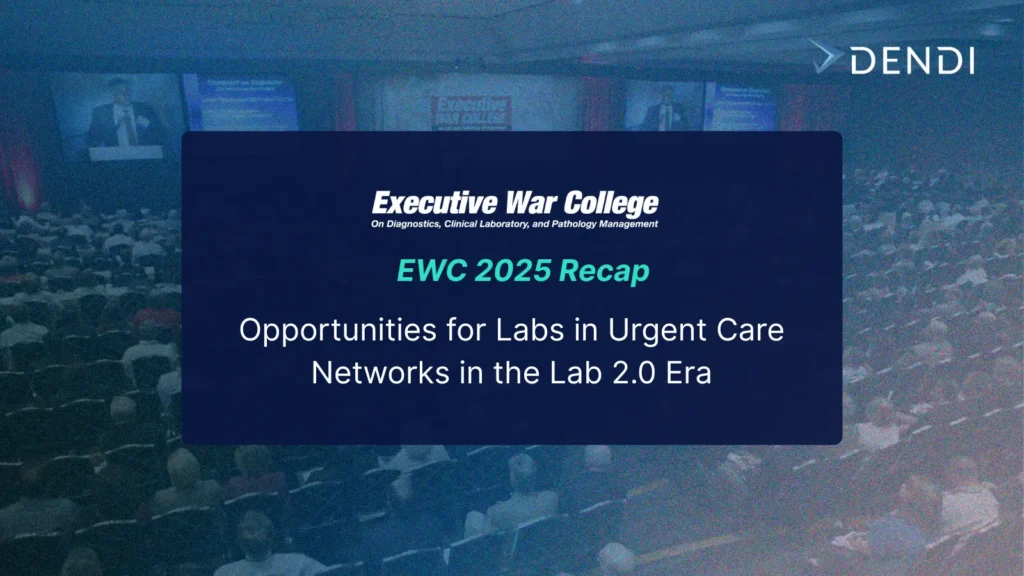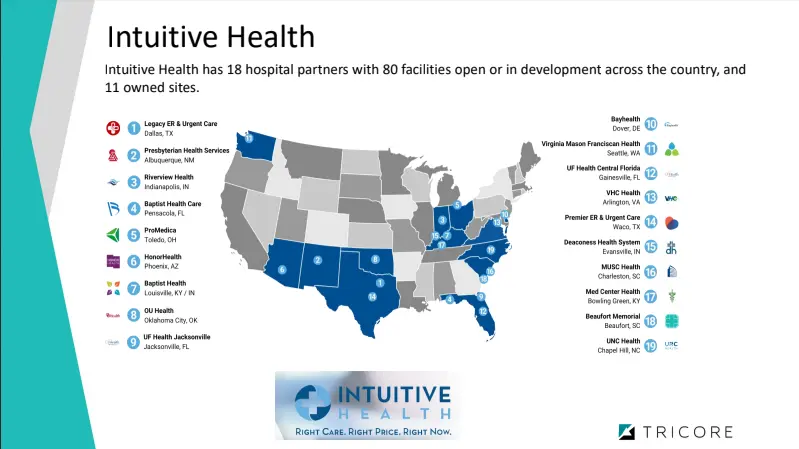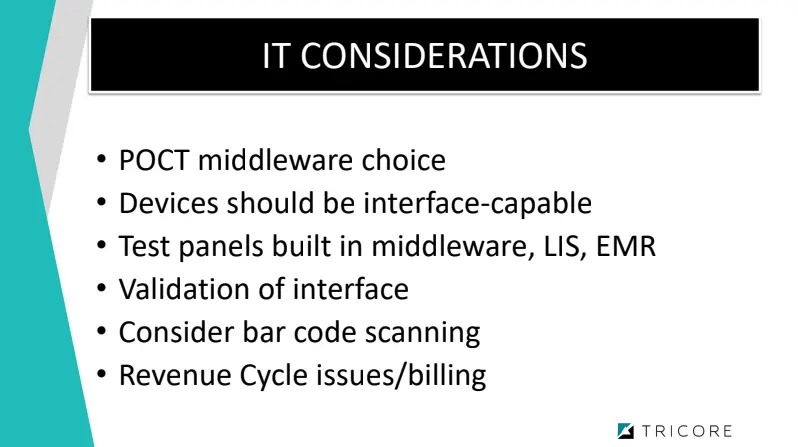
Executive War College 2025 Conference Recap (part 3 of 3)
Opportunities for Labs in Urgent Care Networks in the Clinical Lab 2.0 Era
At Executive War College 2025, the theme of Clinical Lab 2.0 called for laboratories to expand beyond the traditional business model and consider new care models. As healthcare pivots toward value-based, patient-centric delivery, labs are uniquely positioned to collaborate with urgent care centers and freestanding emergency departments, bringing diagnostics closer to patients while driving new revenue streams.
Partnering with Urgent Care Networks: A Strategic Play for Modern Labs
Driven by consumer demand for same-day, no-appointment care, urgent care center growth has been explosive, nearly doubling over the past decade. According to the Urgent Care Association’s 2023 Industry White Paper, the number of U.S. centers climbed from 7,220 in 2014 to 14,382 by mid-2023. Embedding on-site lab services can:
- Expand Patient Reach and Volume
TriCore’s network of 70+ collection sites and 24/7 courier service keeps 98.6 percent of its 12 million annual tests in-state, fueling both local impact and lab utilization. - Accelerate Clinical Decisions
Although true point-of-care platforms live in the clinic, independent labs supporting urgent cares process 15,000–20,000 monthly samples per site. Fast send-out workflows and streamlined interfaces ensure 70 percent of care decisions aren’t delayed by lab turnaround times. - Enhance Patient Satisfaction
In hybrid ED/UC models like Presbyterian’s PresNow, over 700,000 patients have been seen—with 65 percent managed at the urgent care level—eliminating unnecessary ER transfers and delivering “one-stop” convenience.
“Patients now expect answers in real time. The ‘results now’ mentality born in the COVID era has become the new standard. Labs that bring molecular testing on-site at urgent cares will set themselves apart.”
Joe Renzi, Co-Founder of Molecular Lab Partners

Key Considerations for Labs Entering the Urgent Care Space
At EWC, TriCore and Intuitive Health presented key considerations based upon their proven model for urgent care and ED labs. TriCore brings critical lab testing directly into freestanding emergency departments and urgent care centers through a statewide network of 70+ collection sites and a 24/7 courier service, ensuring nearly all 12 million annual tests stay local.
- Test Menu and Device Strategy
- Define core assays (hematology, chemistry, urinalysis, infectious disease) and segregate CLIA-moderate complexity tests versus STAT send-outs.
- Choose analyzers already familiar to your network and capable of multi-analyte runs on a compact footprint. Account for space, power, ventilation and plumbing needs.
- Physical Infrastructure
- Build a dedicated, closable lab space with secured cabinetry for reagents and biohazard waste.
- Install environmental monitors (temperature, humidity) and safety features (splash shields, biosafety cabinets) to protect sample integrity and meet regulatory standards.
- Staffing and Training
- Deploy certified laboratory professionals (MLTs or equivalent) for moderate-complexity testing.
- If leveraging clinic staff for waived tests, ensure robust competency assessments and oversight by the lab team to prevent errors.
- Regulatory Compliance
- Obtain separate CLIA certificates for each site and designate a qualified Medical Director and Technical Consultant.
- Maintain document control for SOPs, perform proficiency testing, and consider additional accreditation (CAP, COLA) for quality assurance.
- IT Integration and Connectivity
- Engage early with LIS/EMR teams to select middleware that aggregates device outputs and automates order/result flows.
- Validate end-to-end interfaces, from barcode scanners to billing systems, ensuring every on-site result triggers the correct charge and clinical alert.
Dendi’s Take on Labs and Urgent Care Centers
The business model for supporting urgent care centers looks to be a promising opportunity for labs. In order to do so successfully, labs must remain nimble and implement the IT foundation that positions them to adapt quickly to new care models and market demands. Dendi LIS is designed to support multi-site networks, such as urgent care and freestanding ED partners, by offering:
- Tools for Modern EHR Integrations
Bi-directional interfaces that connect lab orders and results with any electronic health record system, reducing manual steps and ensuring clinicians always have the latest data. - Patient and Provider Portals
Web-based access points for scheduling, consent collection, and result delivery that enhance transparency and drive satisfaction for both patients and referring providers. - Open API and Middleware Connectivity
A flexible architecture that “plugs in” to billing systems, courier tracking, instrument interfaces (including POC devices and high-volume instruments), and other third-party software, so new capabilities can be added iteratively without a disruptive rip-and-replace. - Centralized Management for Multi-Location Operations
Role-based dashboards and configuration controls that let you maintain consistent workflows, quality controls, and compliance across hundreds of urgent care sites.
By equipping labs with these critical tools, Dendi LIS helps labs deploy Clinical Lab 2.0 strategies at scale. They gain the agility to roll out new tests, update interfaces rapidly, and deliver the speed and convenience today’s patients and providers expect. In an environment where urgent care and hybrid ED models are redefining access to diagnostics, having a modern, integration-first LIS is essential. By thoughtfully crafting test menus, infrastructure, staffing, compliance and IT integration and by partnering with lab experts like Molecular Lab Partners, labs can deliver faster, more accessible care. Those that seize this moment will cement their place as indispensable partners in the modern healthcare ecosystem.
